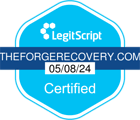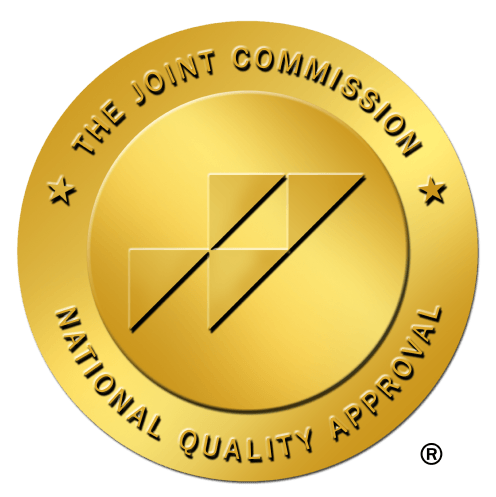Vaping Addiction Treatment


Discover effective vaping addiction treatment strategies to break the cycle and restore health. Learn about personalized plans and steps to quit vaping today.
Vaping has grown rapidly in popularity, often marketed as a safer alternative to smoking. However, its addictive nature and health risks, particularly from nicotine, can lead to significant challenges for you or your loved ones. At the Forge Recovery Center, we understand the complexities of vaping addiction and the impact it can have on your mental and physical well-being. Addressing this addiction is essential to restoring health and reclaiming control over your life. In this article, we will explore effective vaping addiction treatment options and provide insights to help you or your loved one break the cycle for good.
Understanding Vaping Addiction

Vaping addiction is a growing concern as more individuals turn to e-cigarettes, often underestimating their addictive potential. To effectively address this issue, it’s important to understand the devices, their contents, and the health risks involved.
The Nature of Vaping and E-Cigarettes
Vaping devices, also known as e-cigarettes or vapes, are battery-operated tools designed to heat e-liquids into inhalable vapor. These devices typically consist of a battery, a heating element, and a cartridge or tank holding the e-liquid.
E-liquids often contain substances such as propylene glycol, vegetable glycerin, flavorings, and, most concerningly, nicotine. Nicotine, a highly addictive chemical, is frequently present in high concentrations, contributing to dependency in users.
How Nicotine Leads to Dependence
Nicotine addiction begins with its effect on the brain's reward system. When inhaled, nicotine rapidly reaches the brain, triggering the release of dopamine, a neurotransmitter associated with pleasure and reinforcement.
Over time, repeated exposure alters brain chemistry, making it increasingly difficult for individuals to feel normal without nicotine. Compared to traditional cigarettes, vaping devices deliver nicotine in a manner that can feel less harsh, making it easier to consume higher doses without immediate discomfort, thus accelerating dependency.
Health Implications of Vaping
While often marketed as a safer alternative to smoking, vaping carries significant health risks. In the short term, users may experience respiratory issues such as coughing, throat irritation, and shortness of breath.
Over the long term, vaping has been linked to cardiovascular problems, lung inflammation, and potential damage to the immune system. Emerging research has also highlighted conditions like EVALI (e-cigarette or vaping product use-associated lung injury), underscoring the dangers of these products. Understanding these risks is critical for breaking free from vaping addiction and safeguarding long-term health.
Recognizing the Signs of Vaping Addiction

Understanding the signs of vaping addiction is the first step toward seeking help. Identifying both behavioral and physical symptoms can provide clarity on the impact vaping has on your life or that of a loved one.
Behavioral Indicators
Behavioral changes are often the most noticeable signs of addiction. These include:
Increased Frequency of Vaping: You might find yourself vaping more often, even in inappropriate settings or times.
Prioritizing Vaping Over Other Activities: When vaping becomes more important than social events, hobbies, or responsibilities, it signals dependency.
Physical Symptoms
Vaping addiction also manifests through physical symptoms that can disrupt daily life, such as:
Nicotine Withdrawal Signs: If you go without vaping, you may experience irritability, anxiety, restlessness, or intense cravings.
Respiratory Issues: Frequent coughing, shortness of breath, or throat irritation can indicate vaping’s toll on your respiratory system.
Are You Struggling with Mental Health or Addiction?
We Can Help. Call Us Now!
CALL: 877-839-1772
Strategies for Overcoming Vaping Addiction
Breaking free from vaping addiction requires a structured approach. A combination of behavioral, medical, and therapeutic interventions can significantly improve the chances of success.
Behavioral Interventions
Changing behaviors linked to vaping is a crucial first step. Strategies include:
Identifying and Managing Triggers: Recognize situations, emotions, or environments that make you want to vape and develop plans to navigate them.
Developing Healthier Coping Mechanisms: Replace vaping with stress-relieving activities like exercise, mindfulness, or engaging in hobbies.
Nicotine Replacement Therapies (NRT)
Nicotine replacement therapies can help reduce withdrawal symptoms and cravings, making it easier to quit. Options include:
Overview of NRTs: Patches, gums, lozenges, and inhalers provide controlled doses of nicotine without harmful chemicals found in e-liquids.
Effectiveness of NRT: These therapies are proven to reduce withdrawal symptoms, supporting a smoother transition away from vaping.
Prescription Medications
In some cases, prescription medications can provide additional support in overcoming addiction. These include:
Medications like Varenicline and Bupropion: These drugs work by reducing cravings and withdrawal symptoms, making the quitting process more manageable.
Consulting Healthcare Professionals: Always seek personalized advice to determine the best treatment plan for your needs.
Counseling and Support Groups
Emotional support is vital in addressing the psychological aspects of addiction.
Benefits of Therapy: Individual therapy helps address underlying issues driving addiction, while group support fosters connection and shared experiences.
Finding Resources: Many recovery centers, including The Forge Recovery Center, offer access to counseling and support networks to guide you through your journey.
By recognizing the signs and implementing these strategies, you can take a meaningful step toward a healthier, addiction-free life.
The Role of Personalized Treatment Plans

Breaking free from vaping addiction is not a one-size-fits-all journey. Personalized treatment plans cater to the unique needs of each individual, offering a tailored approach to recovery.
Assessing Individual Needs
The first step in a personalized plan is a thorough evaluation of the individual’s situation. This includes:
Severity of Addiction: Understanding how deeply nicotine dependency has taken hold.
Personal Health History: Taking into account existing health conditions, mental health challenges, and past attempts to quit vaping.
Integrating Multiple Approaches
Effective treatment plans often combine several methods for a well-rounded approach. These include:
Behavioral Therapies: Addressing triggers and developing coping mechanisms.
Nicotine Replacement Therapies (NRT): Providing controlled doses of nicotine to ease withdrawal symptoms.
Medications: Prescription options like varenicline or bupropion can enhance the effectiveness of the plan.
Monitoring Progress and Adjusting Plans
Recovery is an evolving process that requires regular oversight:
Continuous Assessments: Periodic evaluations to monitor progress and identify any challenges.
Plan Adjustments: Modifying treatments to address new issues or improve effectiveness.
Are You Struggling with Mental Health or Addiction?
We Can Help. Call Us Now!
CALL: 877-839-1772
Preventing Relapse and Maintaining a Vape-Free Lifestyle
Overcoming vaping addiction is just the beginning; staying vape-free requires consistent effort and support. Developing sustainable habits and accessing resources can help prevent relapse.
Building a Supportive Environment
A strong support system can make a significant difference in maintaining a vape-free life:
Engaging Family and Friends: Involving loved ones in your recovery journey provides encouragement and accountability.
Creating Vape-Free Zones and Routines: Establishing spaces and daily habits that discourage vaping can reinforce your commitment.
Developing Healthy Habits
Replacing harmful habits with positive ones is key to preventing relapse:
Physical Activity: Exercise reduces stress and improves overall health, making it easier to resist cravings.
Stress-Reduction Techniques: Mindfulness practices like meditation or yoga can help manage emotional triggers.
Pursuing Hobbies: Engaging in enjoyable activities distracts from vaping urges and fosters a sense of fulfillment.
Accessing Ongoing Support
Long-term recovery often involves leveraging resources and staying connected:
Helplines and Apps: Many tools provide immediate assistance and reminders to stay on track.
Continuous Counseling: Regular sessions with a therapist or support group help maintain focus and motivation.
Staying Informed: Keeping up with new research and strategies equips you with tools to sustain your progress.
By focusing on personalized care and proactive relapse prevention, you can build a healthier, more resilient life free from vaping addiction.
Vaping Taking Over Your Life? Let Us Help You Quit
Breaking free from vaping addiction is a life-changing decision that restores your health, confidence, and freedom. Overcoming this dependency not only improves your physical and mental well-being but also empowers you to live a more fulfilling, vape-free life. At the Forge Recovery Center, we specialize in helping individuals like you reclaim control with personalized treatment plans tailored to your needs. You don’t have to face this journey alone. Reach out to us today, and let us guide you toward a healthier, addiction-free future. Together, we’ll help you take back your life.
Are You Struggling with Mental Health or Addiction?
We Can Help. Call Us Now!
CALL: 877-839-1772





